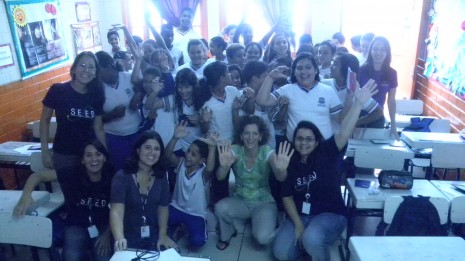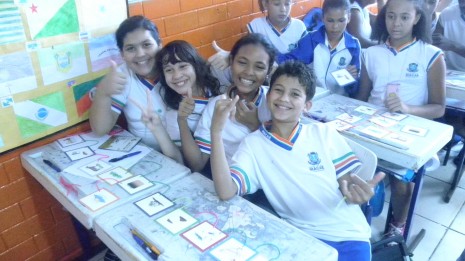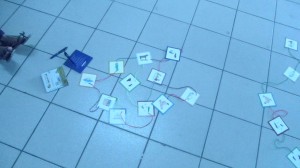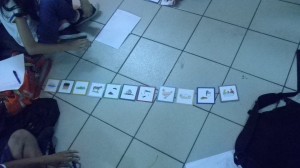Thinking Like Da Vinci in Macae
 In his book, How to Think Like Leonardo Da Vinci, author Michael Gelb lists principles for thinking “a la Leonardo”:
In his book, How to Think Like Leonardo Da Vinci, author Michael Gelb lists principles for thinking “a la Leonardo”:
Curiosita’ – an insatiable curiosity
Dimostrazione – testing knowledge through experience
Sensazione – continued refinement of the senses
Sfumato – a willingness to embrace ambiguity
Arte/Scienza – developing a balance between art and science
Corporalita’ – cultivating fitness and poise
Connessione – recognizing and appreciating the interconnectedness of all things and phenomena
I piloted a new “integrated” workshop for SEED along with Tom Lough and Angie MacArthur that would have made Da Vinci proud. The workshop, offered in Macae, Brazil to 50 teachers and students, touched on all seven Da Vinci principles, plus one. 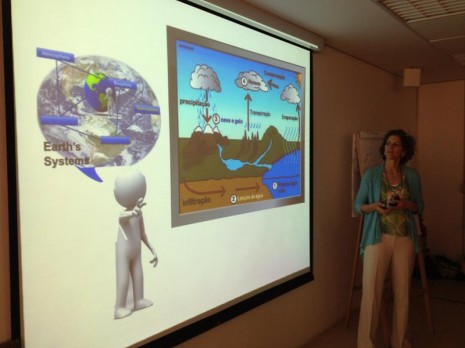
Over the course of five days, students and teachers, ranging in age from 10 to 60, explored the theme of water – its use, management and conservation — through three integrated frameworks: science/technology, complex problem solving, and Smart Wired, which brings us an eighth principle: know thyself. Through Smart Wired concepts and tools, students and teachers work together to better understand not how smart they are, but how they are smart.
We “unpacked” a variety of complex systems (connesione, sfumato) from soda production to the water cycle. Participants kept a journal for notes, observation and reflections (curiosita, sensazione). Students and teachers tested their knowledge of water-related issues (dimostrazione) through a site visit to a local water treatment plant and they engaged in hands-on activities, using robotics, animation software (e.g., SCRATCH) and a systems thinking playkit and through creative (art/scienza) hands-on projects (see this link for project descriptions*). They even went bowling (corporalita).
I congratulate SEED for its efforts to to go beyond traditional science and technology education to educate students to deal not just with technical-based problems but to foster “systems citizens” able to manage the complexity of socio-technical issues in their communities, such as those related to water, energy, health, climate and more.For more on Leonardo Da Vinci as a systems thinker, see Fritjof Capra’s book, The Science of Leonardo and the Global Oneness Project.
*As their final project, one group created a model of a system that was designed to work with the public water supply. In their model, the public water supply is cut off at the house by a special meter and valve subsystem once the monthly water allocation is exceeded. If that happens within a certain month, the house switches over to an internal system that makes use of rainwater stored in a rooftop reservoir. The rainwater is collected through a subsystem of gutters, pipes, and tanks, and is treated through a filtering subsystem before being pumped to the reservoir.





![Contrar[1]](http://lindaboothsweeney.net/blog/wp-content/uploads/2012/06/Contrar1-465x348.jpg)
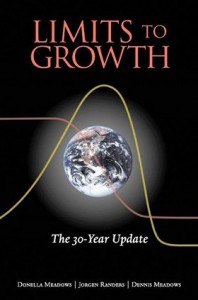 In 1972 a group of MIT scientists wrote
In 1972 a group of MIT scientists wrote 
